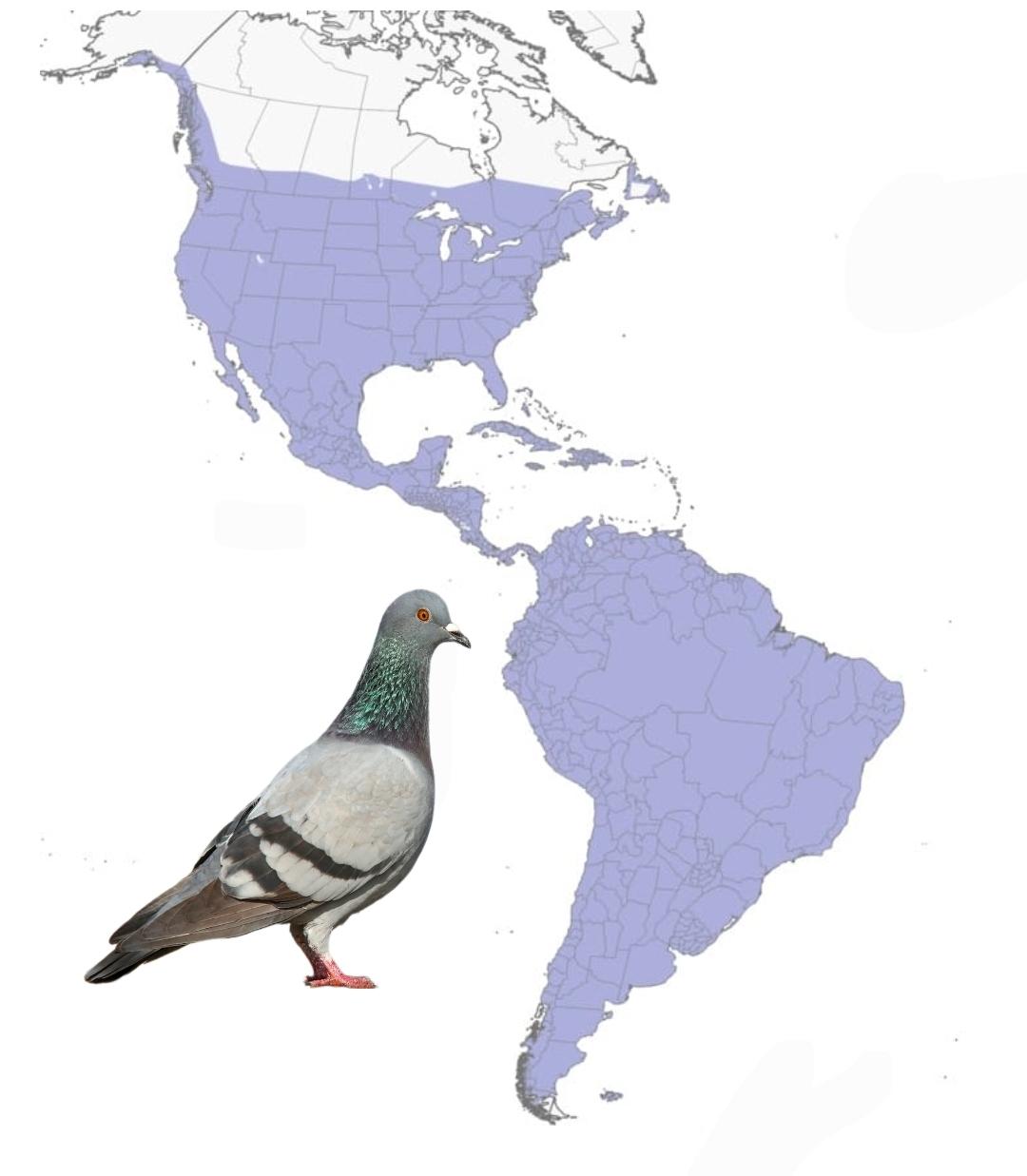Rock Common Pigeon Distribution Map in the Americas


Marcus Rodriguez
Historical Geography Expert
Marcus Rodriguez specializes in historical cartography and geographic data analysis. With a background in both history and geography, he brings unique...
Geographic Analysis
What This Map Shows\nThis map presents the distribution of the Rock Common Pigeon (Columba livia) across the Americas, illustrating where these birds are most commonly found, their habitats, and their population density in urban and rural settings. These pigeons, often seen in city parks and streets, have adapted remarkably well to human environments. This adaptability is a key factor in their widespread presence in various regions, which is what we will explore further.
Deep Dive into Rock Common Pigeons\nThe Rock Common Pigeon is not only a familiar sight in urban environments but also a fascinating subject of study in ornithology. Originally descended from wild rock doves, these birds have been domesticated and bred for various purposes, including racing, exhibition, and companionship. Their presence in the Americas can be traced back to European colonization, but they have since established a significant presence on the continent.
Interestingly, Rock Common Pigeons are known for their remarkable homing ability, which allows them to return to their nest even from hundreds of miles away. This skill has made them popular among bird enthusiasts and racing pigeon fanciers. But what makes them thrive in urban areas? Their primary diet consists of seeds and grains, which are readily available in cities. Urban environments also provide nesting sites on buildings and bridges, mimicking their natural cliff-side habitats.
Rock Common Pigeons are social birds, often seen in flocks that can range from a handful to hundreds. Their social structure is quite complex, and they communicate through a series of coos and body language. Interestingly, they have excellent vision, allowing them to spot food from great distances and navigate efficiently in their environment.
In terms of population, the Rock Common Pigeon is abundant and widespread, with estimates suggesting there are millions across North America and South America. However, their numbers can vary significantly based on local conditions. Urban areas like New York City and Chicago boast large populations, while rural regions may have fewer birds due to less available food and nesting sites.
Regional Analysis\nExamining the map closely, we can see that the distribution of Rock Common Pigeons varies widely across different regions of the Americas. In the United States, major metropolitan areas such as New York, Los Angeles, and San Francisco show high concentrations of these birds. For instance, in New York City, the pigeon population is estimated to be in the range of 1 million, making them a quintessential part of the city's ecosystem.
On the other hand, in regions like the Midwest, while pigeons are still present, their numbers may not reach the densities seen in coastal cities. Interestingly, cities with extensive green spaces, like Washington D.C., also support large pigeon populations, as these areas provide ample food resources and nesting opportunities. In Canada, pigeons are primarily found in urban centers, with their presence decreasing in more rural areas like the northern territories.
Meanwhile, in South America, cities such as Buenos Aires and São Paulo have reported high populations of Rock Common Pigeons. These urban areas offer similar advantages to those in North America: abundant food supplies and safe nesting sites. However, the social dynamics of the pigeons can vary based on local cultures and urban planning, which can influence how they interact with human populations.
Significance and Impact\nThe significance of understanding the distribution of Rock Common Pigeons goes beyond mere curiosity. These birds play crucial roles in urban ecosystems, acting as scavengers that help clean up waste and provide a food source for urban predators like falcons and hawks. Additionally, they offer valuable insights into urban wildlife management and the impact of human activity on animal populations.
However, the presence of large pigeon populations can also lead to challenges. For instance, overpopulation can result in issues related to droppings, which can damage property and pose health risks. Understanding their distribution helps city planners and wildlife managers create strategies to maintain a balance between enjoying their presence and mitigating potential problems.
As urban areas continue to expand and evolve, the adaptability of Rock Common Pigeons may serve as an indicator of environmental health. Their ability to thrive in changing conditions can provide clues about the resilience of urban ecosystems to climate change and human development. As we further study these fascinating birds, we can learn more about our cities and the wildlife that inhabit them, paving the way for a more harmonious coexistence in the future.
Visualization Details
- Published
- October 18, 2025
- Views
- 42
Comments
Loading comments...